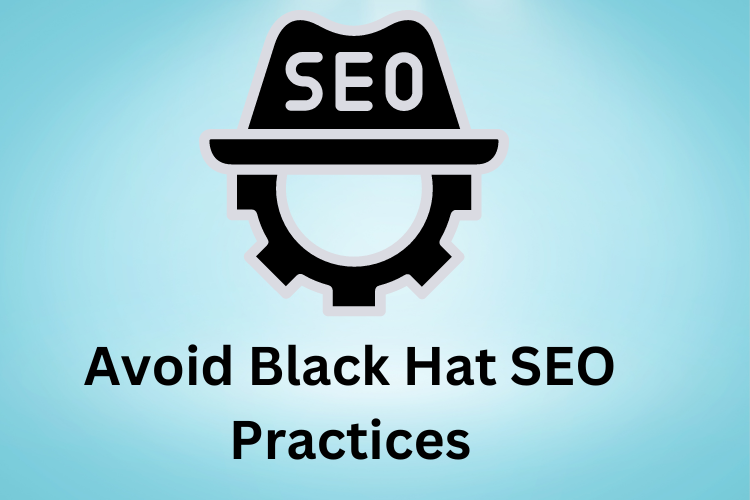In this article, we delve into the:
- Meaning of the sandbox in SEO
- Explore the sandbox impact on website rankings
- Discuss strategies to escape or reduce the duration of being in the sandbox
What is the sandbox in SEO?
In SEO, the term “sandbox” is a made-up idea that means search engines like Google might have a system to hold back new websites from appearing high in search results.
It’s like a test phase for new websites, where they have limited chances to rank well.
Imagine you open a new store, but for a while, it’s hard to find and people don’t know about it.
That’s similar to what the sandbox theory says happens with new websites.
It explains why some website owners noticed their sites took longer to show up high in search results.
During this test phase, new websites may have trouble appearing for popular search terms, and fewer people may see them.
How long this test phase lasts is not known for sure, and experts have different opinions, ranging from a few weeks to a few months.
It’s important to know that search engines, especially Google, haven’t officially confirmed the sandbox.
Some SEO experts believe in it, while others think the delays in ranking can be due to other reasons, like the time it takes to build a good reputation and get quality links.

Google’s comments on the concept of sandbox in SEO
Google has never explicitly confirmed the existence of the Google Sandbox.
However, there have been a few occasions where Google representatives have commented on the concept.
The following tweet from a Google spokesperson is proof that Google disagrees with the concept of sandbox in SEO.
we don't have a "sandbox". Don't worry about it @JohnMu
— Gary 鯨理/경리 Illyes (so official, trust me) (@methode) June 16, 2016
Is Your Website in the Sandbox?
Here are some potential signs that your website might be in the sandbox:
Slow rankings:
Sometimes, when you create a new website, it may not show up at the top of search results for the words that relate to your site.
Even if you’ve done a good job creating high-quality content and getting other websites to link to yours, the website is still not ranking well.

Limited traffic:
You might find your website is not getting much organic traffic from Google. The number of visitors could be much lower than you expected.
This could be a sign that your website is in the Google sandbox, a place where new websites take time to show up in search results.
Fluctuating rankings:
You might notice that your website’s position in the search results keeps changing a lot.
Sometimes it goes up, and other times it goes down, and there’s no clear pattern.
This could be another sign that your website is in the Google sandbox for a specified period.
Indexing issues:
When search engines don’t add some or all of your webpages to their lists, it becomes hard for people to find your website when they search online.
It might also be a sign that your website is in a ‘sandbox,’ which means it’s not fully visible to everyone yet.

Lack of backlink influence:
When you get good backlinks from trustworthy websites, they should help improve your website’s position in search results.
However, if your website is in the Google sandbox, then even with these quality backlinks, your website may not move up much in the rankings.
How can you reduce the sandbox period (or get out of the sandbox)
Reducing the potential sandbox period for a new website is not an exact science, as the sandbox itself is a theoretical concept.
Search engines like Google do not officially confirmed the existence of sandbox.
There are some proven practices and tips that can be helpful in reducing the sandbox period or getting out of the sandbox.
Here are some strategies:
Quality and Relevant Content:
It’s essential to make great content that is useful and interesting.
Think about what people are searching for and what your audience wants to know. Update your website with new and helpful information regularly.
This helps search engines know your website is active and valuable, which can reduce the sandbox duration.
Keyword Research:
When creating content, first, find out what words and phrases your target audience is using to search online.
Use these important keywords in your content to make it search engine friendly.
This way, when people look for information related to your content, they are more likely to find your website in the search results.
So the keyword research is crucial.

Increase Topical Authority
Increasing topical authority is crucial for helping search engines, like Google, understand the specific niche and expertise of your website.
This can be done by creating really good content about your topic, using important keywords that people search for, and getting backlinks from trustworthy sources.
The most important thing is to be consistent as well.
It helps Google understand that you are serious with your website/blog and provide helpful information constantly to users.
When you do this, your website becomes a reliable place for information, and more people will find it when they search online.
This helps your website get to the top of search results and attracts the right kind of audience.
Focus on Topic Clusters:
Instead of just working on separate pages for different keywords, make topic clusters.
A topic cluster starts with a main pillar page that talks broadly about a topic.
Then, you create other pages that cover specific parts of that topic in more detail.
Linking these pages together with relevant anchor text helps search engines understand the interrelated nature of your content.
This way, your website becomes more organized and helpful for people searching for information, and easier for search engines to understand it.
Use Semantic Keywords:
When you write content, use words and phrases related to your main keywords.
It will show search engines that you are discussing the topic thoroughly.
Tools like LSI keywords can help you find these related terms.
This way, search engines understand your content better and can show it to people who are looking for information on that topic.
Backlinks:
Getting links from trustworthy websites related to your topic can boost your website’s credibility and help you get out of the sandbox.
But, make sure to use natural ways to get these links, not spammy methods that can harm your website’s reputation.

Quality Outbound Links:
When you link to trustworthy and expert sources in your topic, it makes your website more reliable and knowledgeable.
It shows that you are connected to other important experts and helpful resources in your field.
Social Signals:
When people engage with your website on social media (by sharing or commenting), Google recognizes your website and gives it the opportunity to rank in SERP.
Additionally, having a lively and active presence on social platforms can attract more visitors to your site.
This might lead to more people linking to your content, helping you to reduce the sandbox duration.
Guest Posting and Collaboration:
If you write articles for other trustworthy websites in your area and collaborate with other experts, it can help more people learn about your website.
It also allows search engines to crawl and understand your website better.

Website Structure and Technical SEO:
Make sure your website has a clean and organized structure, so search engines can easily crawl and index your content.
Pay attention to on-page and Technical SEO elements like:
- Meta tags like meta title meta description
- Headings
- Image alt attributes
- URL structure
- Schema markup
Submit Sitemaps:
When you submit your website’s sitemap to search engines like Google Search Console, it helps them find and organize your content faster and better.
Avoid Black Hat SEO Practices:
Don’t use sneaky SEO tricks because they can get your website in trouble with search engines.
These bad practices might cause penalties and make your website less visible over time, potentially resulting in your website being stuck in the sandbox forever.

Patience and Consistency:
It takes time to make a successful website and improve its search engine rankings.
So, be patient and keep working hard to create valuable content and connect with your audience.
Consistency and effort will help your website grow and become better over time.
How long does Google sandbox last?
No one knows for sure how long a website stays in the sandbox since it’s not a confirmed thing.
Many SEO professionals have experienced the sandbox for a duration of 6 months to 2 years.
Why Do New Websites Get Into Sandboxed?
New websites may experience a sandbox-like effect due to various factors, including:
- Google’s assessment of their niche
- Expertise
- Overall credibility
Google evaluates websites based on EEAT (Experience, Expertise, Authoritativeness, and Trustworthiness) to ensure they provide relevant and accurate information to users.
Lack of established authority, limited quality content, insufficient backlinks, and perceived lack of trust can contribute to the sandbox effect.
Building a solid foundation of expertise and trustworthiness over time can help new websites overcome this initial hurdle and gain visibility in search results.

Summing it Up:
It’s important for new website owners and SEO experts to understand the SEO sandbox.
Some people aren’t sure if the sandbox is real, but it could affect how new websites show up in search results.
In this article we have learned about the concept of sandbox in SEO, which can affect new websites in Google.
Some people aren’t sure if it really exists, but it can make it hard for new sites to show up in search results.
We have also talked about ways to overcome the sandbox, like making good content, getting good links from other websites, and gaining people’s trust.
Even though the sandbox might be a challenge at first, if you keep trying and follow white hat SEO rules, your website can become more visible in Google over time.
Frequently Asked Questions (FAQs)
What is the use of Google sandbox?
The “Google sandbox” is a make-believe filter that some people think Google uses for new websites.
If it’s real, it stops new sites from showing up high in search results right away.
The idea is to stop bad or low-quality websites from tricking people.
Google wants to check if new sites are trustworthy and useful before putting them at the top of search results. This is also called the Google sandbox effect.
But remember, the sandbox is not confirmed, and Google hasn’t said anything about it officially.
Is Google sandbox real?
Whether the Google sandbox is real or not is still argued among SEO experts.
Some people say they have seen the sandbox effect with new websites, but Google has never said it officially exists.
Google’s ranking algorithms are very complicated and always changing.
If a new website takes time to show up in search results, it could be due to many things like:
- How old the website is?
- How good the content is?
- Quality of backlinks that website has
- How much people engage with it?
So, there’s no clear answer about the sandbox.
